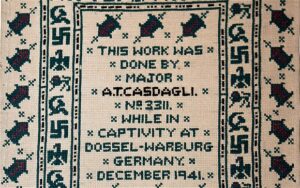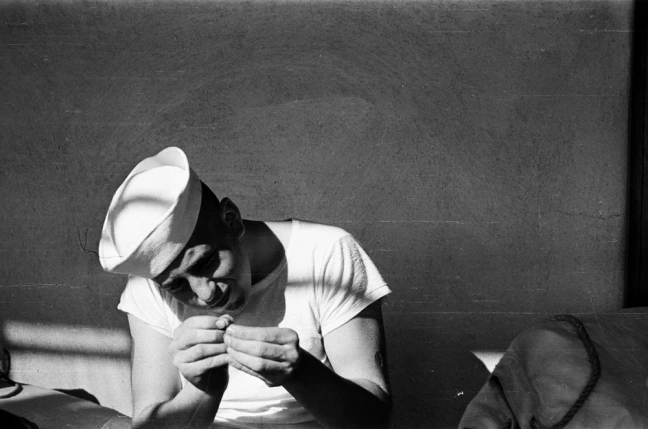“Threading Defiance: The Empowering History and Subversive Role of Needlework in Social and Political Contexts”
The Needle’s Magic: Unraveling Subversive Stitching and Empowerment
Hello, textile enthusiasts! Welcome back to another deep dive into a world where needles weave not just threads, but intricate stories, histories, and voices. Today, we delve into part two of a fascinating exploration aptly titled *The Needle as the Pen*, originally penned by the talented Andrea Liu.
A Stitch in Time: Childhood Memories and Women’s Labors
The comforting image of women from previous generations sewing—a grandmother patching a dress or a mother embroidering a doily—is a common collective memory. These scenes, depicted as nurturing and calming, often mislead us into undervaluing the true power embedded in the needle. This skeletal tool does more than mend, tailor, and embellish; it carries weighty symbolism and multifaceted roles that stretch far beyond domestic confines.

The needle’s historical trajectory is a meandering path fraught with dualities such as conformity versus rebellion, and confinement juxtaposed with comfort. Originally relegated as a woman’s tool to enforce patriarchal norms, the needle subverted these very roles, becoming an implement of empowerment and silent resistance.
The Feminine Art of Needlework: From Confinement to Empowerment
In feminist circles, the needle is often a flashpoint of debate, representing both oppression and empowerment. Throughout history, the disciplined act of sewing signified repression, a method to keep women confined within domestic realms. As Merry Wiesner poignantly noted, needlework was seen as beneath male dignity, a domestic chore designed to keep women ‘in their place’.
Yet, the historical narrative is complex. Prior to the 17th century, both men and women wielded the needle. Needlecraft was not always a strictly gendered activity; in fact, men frequently engaged as embroiders and tailors. This knowledge muddles the simplistic designation of needlework as inherently feminine.
The Needle in Wartime: Subversive Stitchings
Remarkably, the needle has proven to be a subversive tool throughout conflicts. Consider the British Major Alexis Casdagli during World War II, who used the needle to stitch hidden messages of defiance into seemingly innocuous samplers. This act of rebellion, done under the very noses of his Nazi captors, reveals the needle’s potential as a quiet insurgent, a vehicle of covert resistance.
The same thematic thread can be found among British sailors who used to spend a designated ‘make and mend’ day mending their uniforms. Interestingly, the parlance ‘hussif’ or ‘housewife’ referred to their sewing kits, showing how integral needlecraft was even in hyper-masculine settings like the military.
Literature and the Needle: The Smart Little Tailor
The classic narratives amplify the needle’s complex role. Literary figures such as the cunning tailors in *The Tailor of Gloucester* or *The Emperor’s New Clothes* echo a certain image of the tailor as intelligent but socially marginal, further enshrining the needle’s gendered perceptions.
Beatrix Potter’s tailor worked delicately with fine silks, yet lived in destitution—a representation of the undervaluation of such skilled labor. A similar dichotomy exists in *The Valiant Little Tailor*, wherein the titular character uses wit and cunning over physical prowess, reinforcing the perceived femininity linked to the needle.
Stitching as Political Activism: The Dual Nature of Needlework
The needle became a vehicle for political dissent and social activism. Feminists argue that despite being historically tied to gender stereotypes, needlework served as a potent means of expression. Elaine Hedge’s essay “The Needle or the Pen?” highlights the dilemma—whether to choose domestic confines symbolized by the needle, or the public freedom denoted by the pen. However, the evolution of thought encourages us to see beyond this binary. Reframing the question as ‘the needle
as** the pen’ unveils how needlework has allowed women to pioneer their own narratives.
The Therapeutic Power of the Needle: Healing and Forgiveness
The needle’s therapeutic powers deserve mention. Louise Bourgeois once remarked on the needle’s capacity to heal and forgive, distinguishing it from the aggressive pin. The act of stitching facilitates reflection and understanding, rendering it an emotional balm for both the wearer and the sewer.
Indeed, the time and labor invested, as Maureen Daly Goggin notes, imbue the resulting textile with emotional significance, making them lasting legacies. This investment can convey messages of love, resilience, and defiance, which may become historical artifacts for future generations.
Textile Art: A Subversive Canvas
Artists like Elaine Reichek have utilized textiles to stage dialogues on power and resistance. Tied to the ‘politics of thread’, textile art often becomes a subaltern voice challenging dominant discourses. Textile production, traditionally relegated to women’s work, has thus evolved into a powerful medium for commentary on societal norms and injustices.
The act of stitching is not merely creating something useful or beautiful; it is about inscribing personal and collective histories into fabric. Women’s needlework carries ideological clout, able to solidify communities or even stir societal transformations.
Conclusion: The Everlasting Power of the Needle
Embarking on this journey through time and textiles, we uncover the layered significance of needlework. From a historical tool of patriarchal compliance to an instrument of personal and political power, the needle’s story is one of transformation. It stands as a testament to the resilience and ingenuity of those who wield it, making the needle not just a tool but a profound symbol of resistance, agency, and creativity.
So, textile enthusiasts, the next time you thread a needle or admire an intricate pattern, remember: you are holding a piece of history, a story of defiance and empowerment, woven into the very fabric of our collective consciousness. Until next time, keep stitching, keep creating, and let your thread tell your story! And be sure to check out more on Andrea Liu’s captivating explorations through textiles and activism.
Stay inspired, Topher
Keywords: Needlework, Empowerment, Subversive, (Post number: 163), Textile, Feminism





